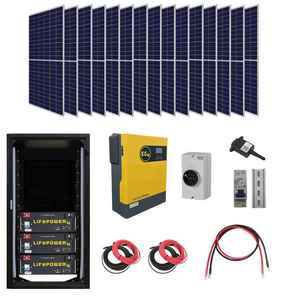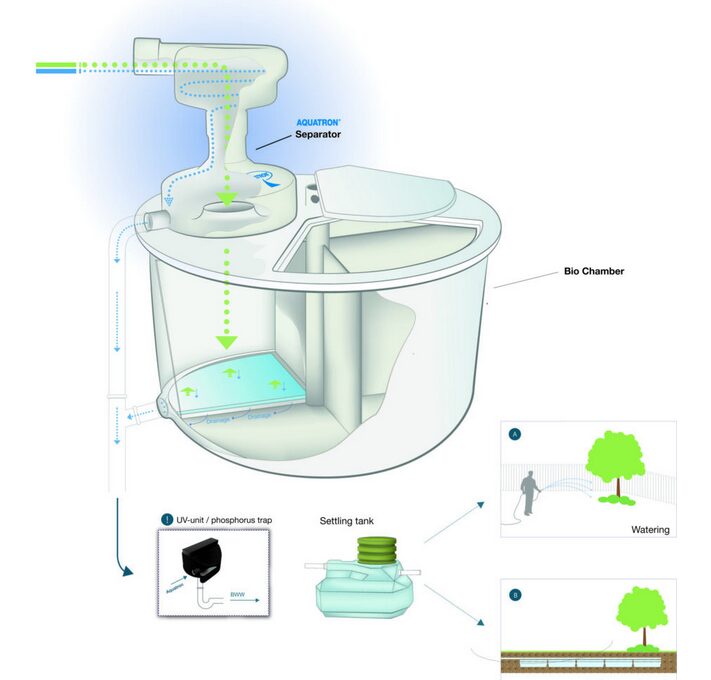I did my first PV solar installation almost 20 years ago. It’s pretty amazing how things have changed in those 20 years. For the consumer it is all good — more options, longer battery life and much lower prices. While I expect prices will continue to drop on both batteries and PV panels, the payback time today may well dictate that it is time to go PV solar.
PV Panels
 The two biggest changes here are the number of watts produced per square meter and the cost per watt. Most panels are now around 1 x 2 meters. The peak power output of these panels can be 500 watts or more. As an example, I recently purchased 505 watt panels which are 1.1 x 1.2 meters. If you go to a real supplier of PV equipment (not a big box retailer) you can find these panels for $.50/watt or less.
The two biggest changes here are the number of watts produced per square meter and the cost per watt. Most panels are now around 1 x 2 meters. The peak power output of these panels can be 500 watts or more. As an example, I recently purchased 505 watt panels which are 1.1 x 1.2 meters. If you go to a real supplier of PV equipment (not a big box retailer) you can find these panels for $.50/watt or less.
The obvious question is how many panels you will need. There is no universal answer. It depends on what latitude you live at, the time of year and the amount of cloud cover. Here is the rule of thumb I use. I live in Guatemala at 14 degrees latitude. This means that the number of daylight hours varies very little — say from 12 to 13 hours per day. It does rain quite a bit from May through October but generally just in the late afternoon.
Solar panels produce their peak power when the sun is directly overhead (assuming they are facing directly upward) with the output dropping off at other angles of the sun. I find that assuming the equivalent of six hours of peak output works out about right. Doing the math, a 500 watt panel will produce about 3000 watt hours (3 kWh) per day. That’s about 90 kWh/month. Check your electric bill to see what you actually use.
Batteries
 The world of batteries has also changed significantly in the last few years. While lead-acid batteries used to be the norm, you can now find Lithium Iron Phosphate (LFP) batteries at reasonable prices. While still not as cheap as lead-acid they have significantly advantages:
The world of batteries has also changed significantly in the last few years. While lead-acid batteries used to be the norm, you can now find Lithium Iron Phosphate (LFP) batteries at reasonable prices. While still not as cheap as lead-acid they have significantly advantages:
- They weigh much less than lead-acid batteries — around 1/3
- They have higher energy density
- Their life is significantly longer — three thousand cycles or more
To optimize their life, a battery management system (BMS) is needed. Some batteries have them built in.  This unit, for example, has a BMS and a display to show battery status.
This unit, for example, has a BMS and a display to show battery status.
The Inverter/Charger
This is the brains of the system. What it does is controls the charging of the battery from the PV array, switches over to the electric grid if the battery gets too low and converts the DC voltage — both from the PV array and the batteries — to provide 120 volt and, on the higher end, 240 volt AC to run your house.  The unit I show here is from Signature Solar. It is a very recent addition to their product line and is capable of providing 12 kilowatts of power. https://signaturesolar.com/eg4-18kpv-hybrid-inverter-all-in-one-solar-inverter-eg4-18kpv-12lv/ While I expect other vendors have similar units this unit seems priced well and I am a satisfied customer of the company.
The unit I show here is from Signature Solar. It is a very recent addition to their product line and is capable of providing 12 kilowatts of power. https://signaturesolar.com/eg4-18kpv-hybrid-inverter-all-in-one-solar-inverter-eg4-18kpv-12lv/ While I expect other vendors have similar units this unit seems priced well and I am a satisfied customer of the company.
There is a lot more to cover if you intend to add PV solar to your house. Consider this article as an overview. If there is sufficient interest, I will cover this topic in more detail.



